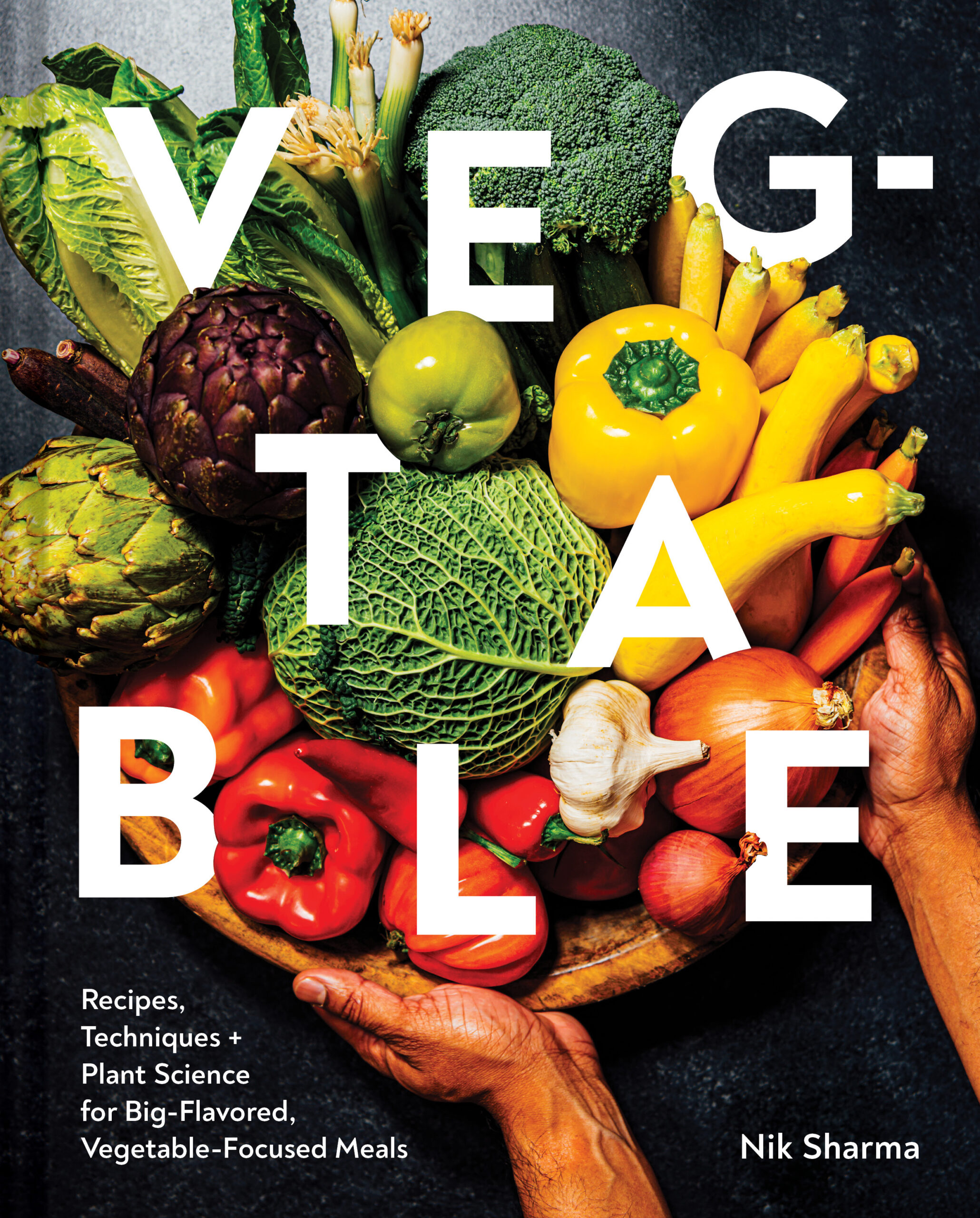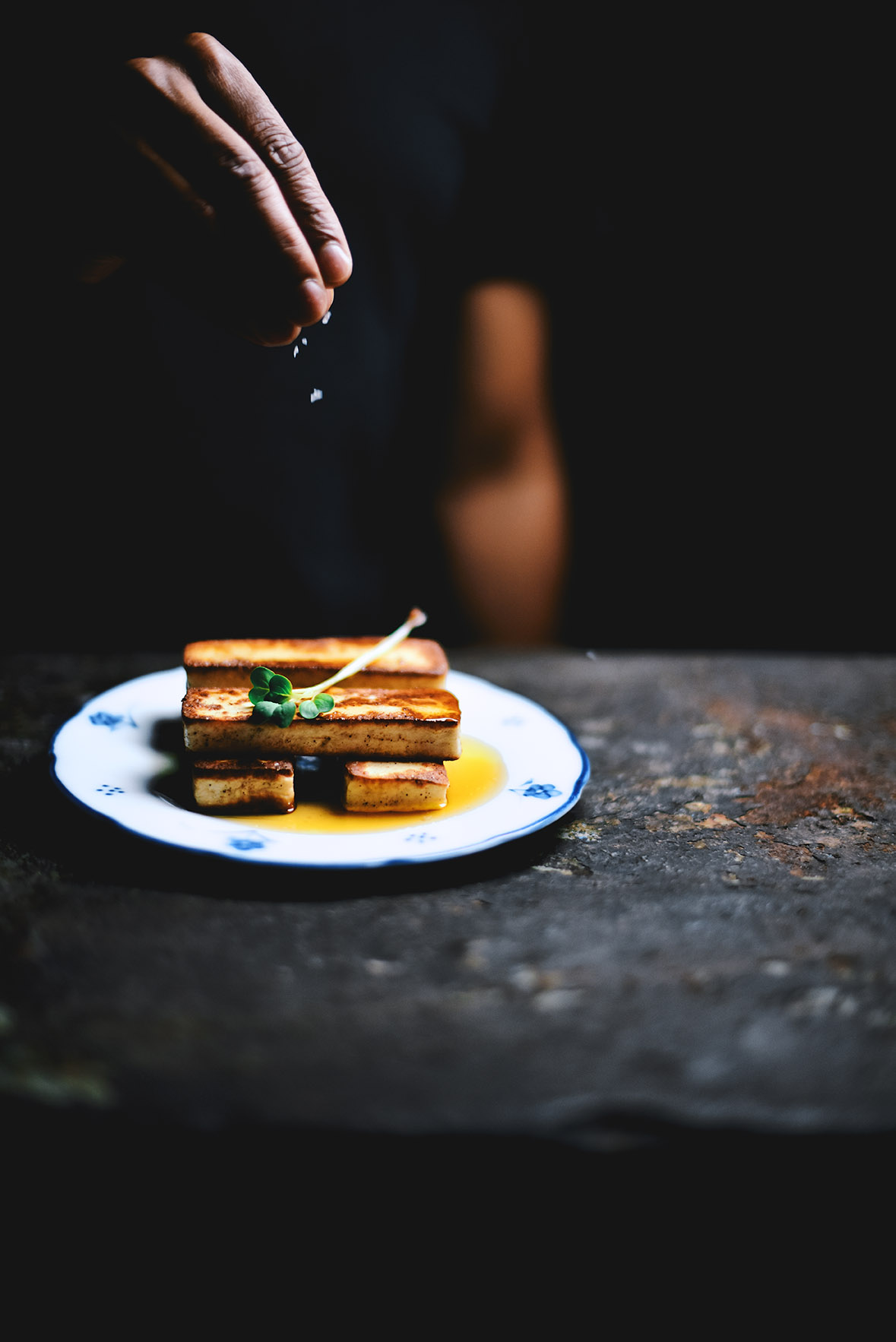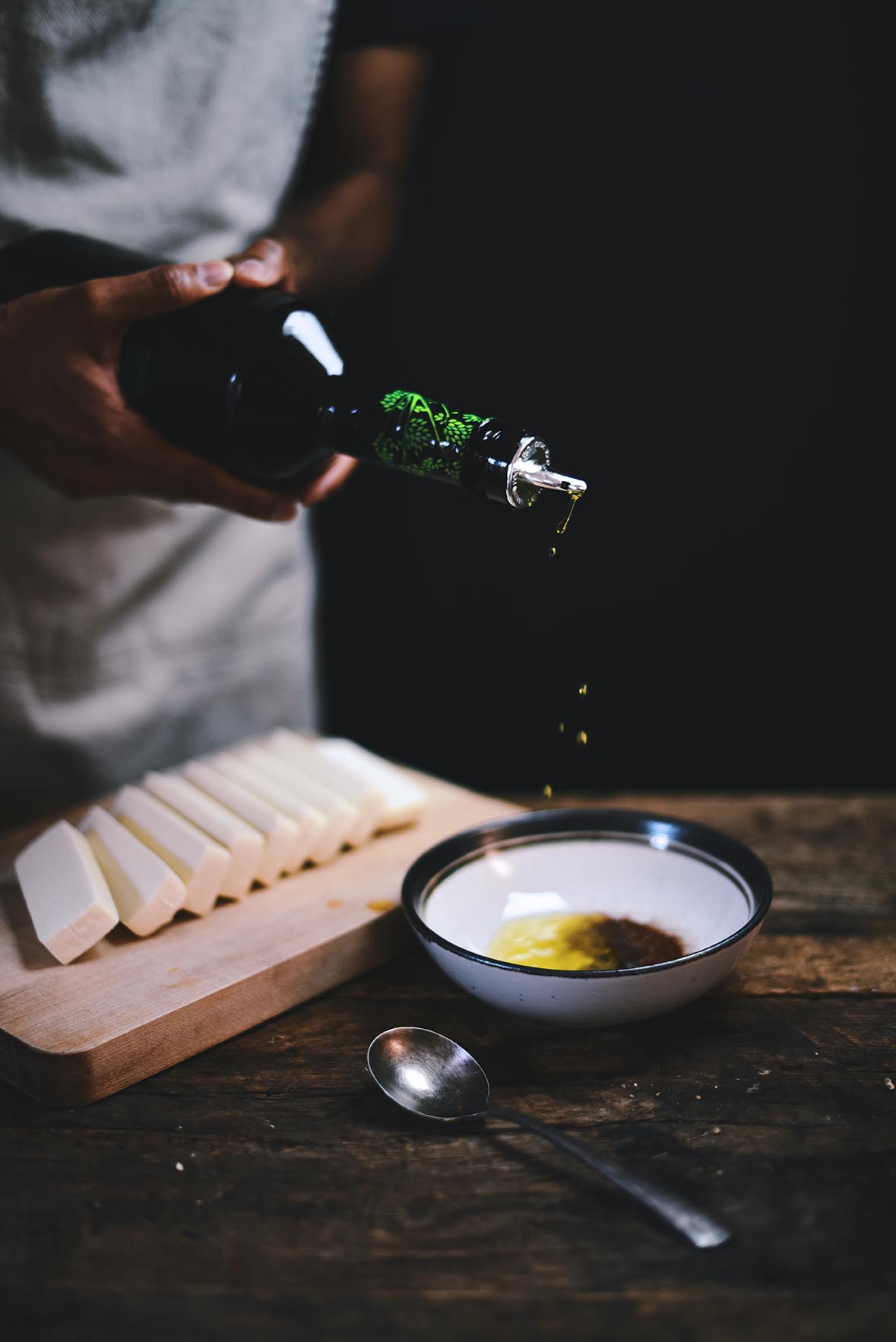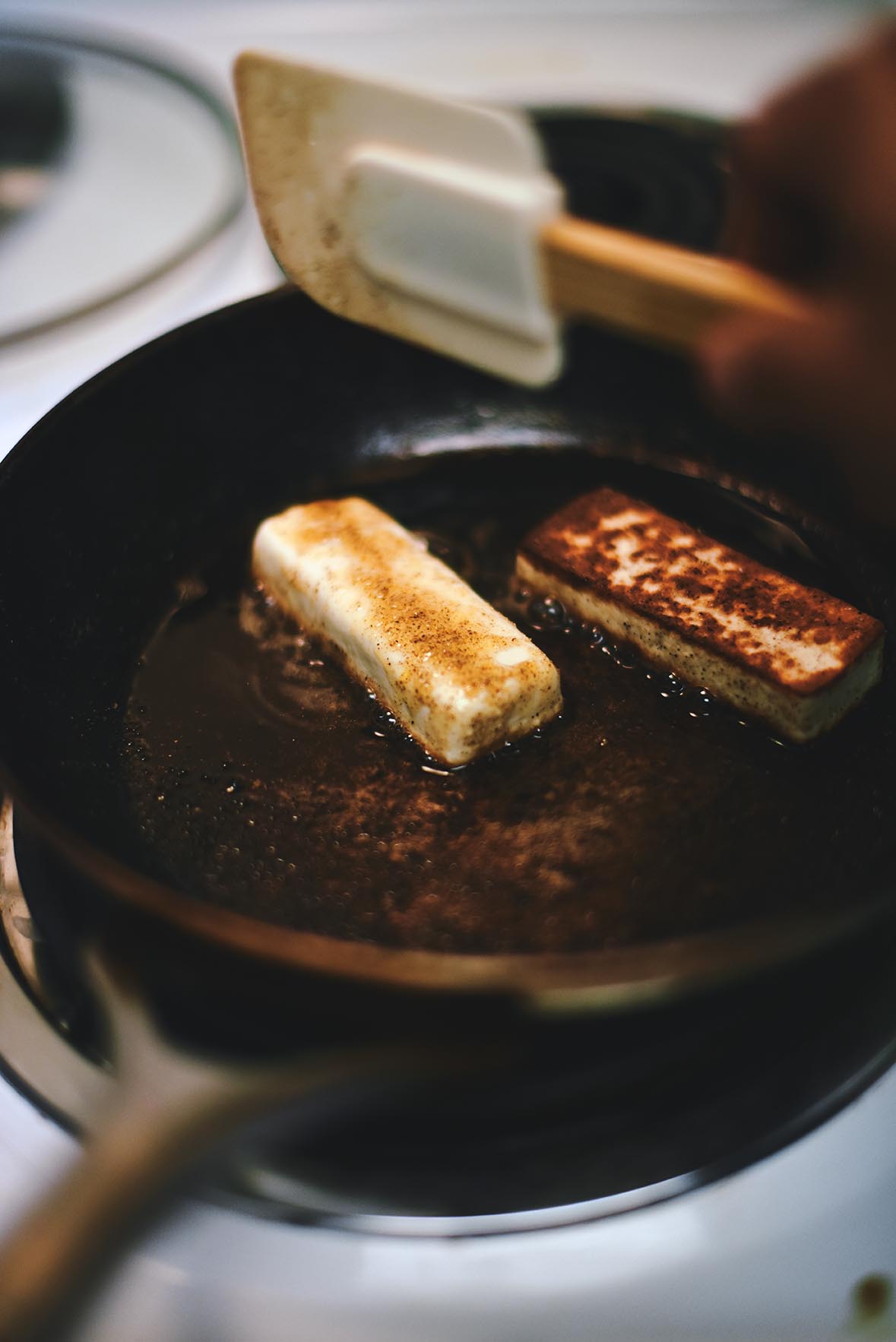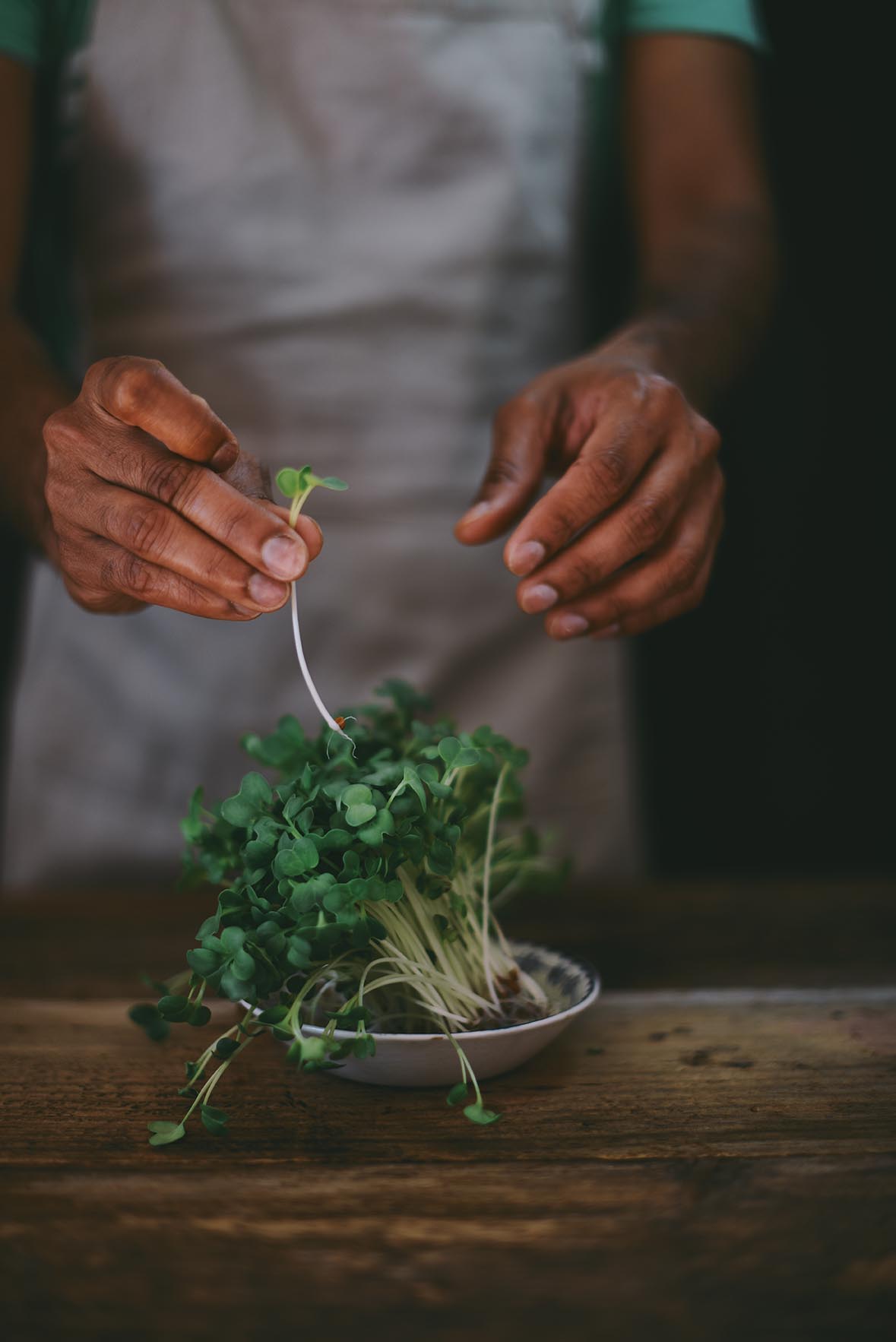Dairy is pretty popular in India, the fact that I grew up eating plain yogurt at any time of the day, is probably a good testament to this fact. Cheese however as we think of it here in the West, is made in a very different manner in India. Rennet and fermentative bacteria are not the tools of choice when it comes to preparing Indian cheeses but rather acid and heat coagulate the proteins in milk. You still get western style cheeses in India and they are popular but panner is by far the most prominent cheese used in Indian cuisine. Paneer is a type of cheese, that doesn’t melt when heated and in many ways, it reminds me of tofu. It takes on the flavor of anything it’s mixed with and you’ll find it used in curries and other savory dishes. If you look into my freezer, you will often see a small pack of paneer stored because the possibilities with this cheese are endless when used correctly. You can find paneer at Indian and South East Asian and/or International food markets and I’ve also come across low-fat versions of this cheese too. The good thing about this cheese is that it holds it’s texture very well when heated as it doesn’t melt. However, this also makes it, in my opinion, unsuitable for a grilled cheese sandwich. This paneer recipe is very simple to make and is an easy appetizer or side to serve. It’s definitely not a traditional way of serving it in India but as I always say, why not! Just doll the warm slabs of paneer up with a few fresh daikon radish shoots and the tea and pineapple dressing before serving it. Here are some of my kitchen tips when preparing this paneer dish;
Use low-fat or full-fat milk derived paneer. Honestly, the fat-free kind tastes terrible. I was tempted to call the tea and pineapple dressing a vinaigrette but the ratios of the components are a little off from the classical definition so I’ve labeled it a dressing. The tea is lightly sweetened with fresh pineapple juice which gives the dressing a little sweetness and tanginess. If you want it a little sweeter add a little more juice after tasting the dressing. The extra garnish of sea salt flakes at the end when serving is optional but I personally like the touch of saltiness because paneer by itself is generally not salty when made from milk.
seared paneer with tea and pineapple dressing yields: 4 servings ingredients 400 grams (14 ounces) low-fat/full-fat paneer, chilled 1/4 cup extra virgin olive oil + a little extra for searing 1/2 teaspoon kosher sea salt 1/2 teaspoon white pepper powder 1/2 teaspoon sweet paprika powder a few fresh daikon radish shoots to garnish a little Maldon sea salt flakes (optional) tea and pineapple dressing 1 black tea bag (I used Darjeeling tea) 100mL boiling water 50mL white wine vinegar 3 tablespoons pineapple juice, fresh 100 mL extra virgin olive oil 1/4 teaspoon kosher sea salt
- Slice the paneer into 9 cm X 3 cm long slabs that are 1.5 cm thick.
- In a medium-sized mixing bowl, place the olive oil and the rest of the ingredients from the salt to the paprika and mix with a spoon. Brush each of the paneer slabs with this mixture and allow them to sit for 10 minutes at room temperature to absorb the flavors.
- Heat a little extra oil in a medium-sized skillet on medium – high heat. When the oil just starts to smoke, place two to three slabs of the seasoned paneer. Cook on each side until seared and lightly browned. This should take about 60-90 seconds on each side. Place the seared paneer on a dry paper towel to absorb any excess oil. Cook the rest of the paneer in the same manner and keep aside until ready to use.
- To prepare the dressing, place the tea bag in a small heat proof bowl. Pour the boiling water over it and allow it to sit for 10 minutes. Drain the tea bag to remove any excess liquid (avoid squeezing the bag or the tea liquid will turn murky). Pour the tea into a medium bowl along with the remaining ingredients. Whisk until combined.
- To serve place the hot/warm seared paneer slabs in a serving dish. Drizzle the paneer with as much as tea dressing as desired. Garnish with a few fresh daikon shoots and sprinkle with extra sea salt flakes if desired. Serve immediately with extra dressing and daikon radish shoots on the side. Comment * Name * Email * Website Save my name, email, and website in this browser for the next time I comment.
Δ

